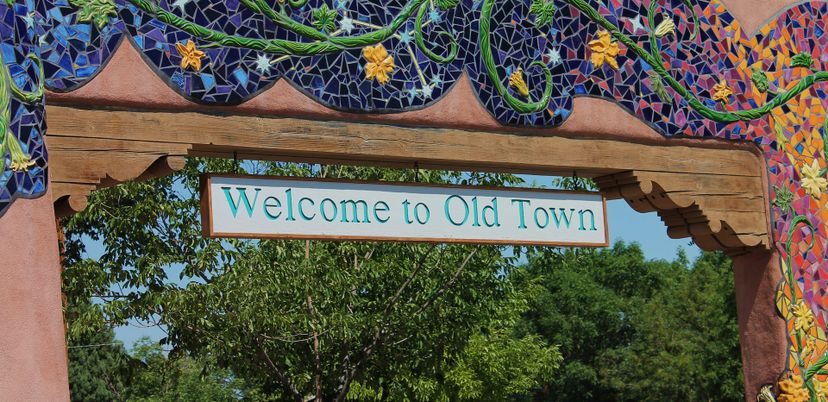
For over four centuries, New Mexico has been a cultural crossroads, a place where Spanish, Native American, Mexican, and American influences have co-mingled to create a rich and unique society. Fortunately, New Mexico celebrates its long and colorful history with a diverse mix of museums, national monuments, and other carefully preserved historical and cultural sites that are open to the public. From ancient cliff dwellings and the oldest continuously inhabited community in the U.S. to world-renowned art museums and churches where miracles seem to happen, New Mexico’s history and culture are truly amazing.
Advertisement
1. El Santuario de Chimayo
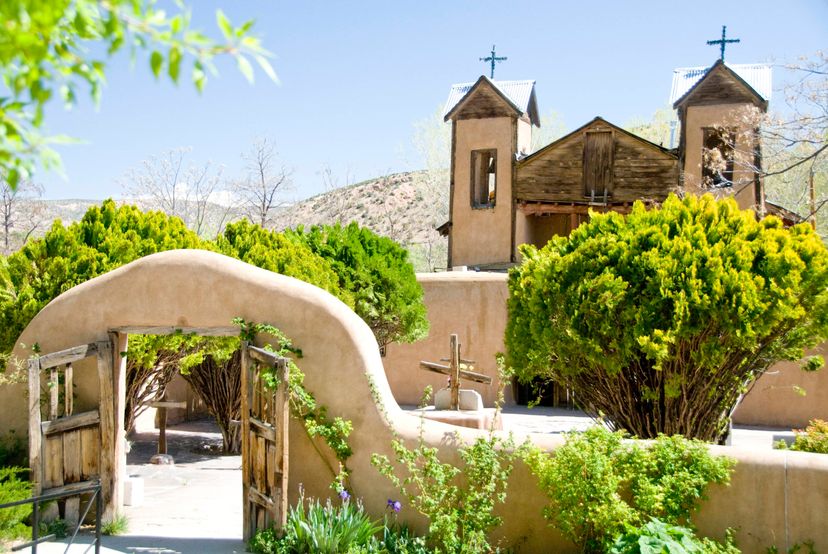
Tucked away in the little town of Chimayo along the historic Turquoise Trail, the El Santuario de Chimayo is world renown as a place where miracles occur. The tiny chapel, circa 1856, is built on a site associated with a miracle of the crucifix of Our Lord of Esquipulas. A small room in the complex contains a pit of Holy Dirt that many believe possesses healing powers. A shrine just outside that room is lined with discarded crutches and numerous moving testimonials from people who claim they were cured after rubbing the Holy Dirt on themselves. An annual pilgrimage to El Santuario during Holy Week involves some 30,000 people from around the world. Some people walk from as far away as Albuquerque (about 90 miles away), taking up to a week of walking before they arrive at El Santuario de Chimayo.
2. New Mexico History Museum/Palace of the Governors
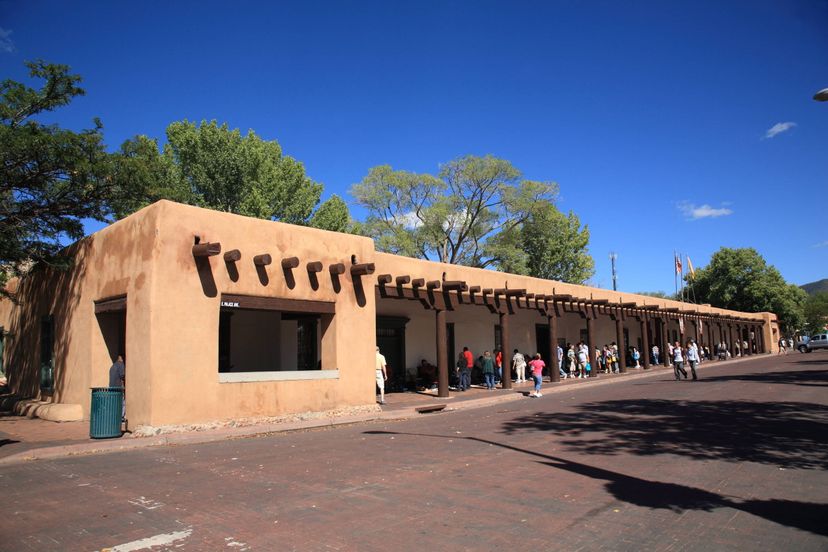
Encompassing the oldest continuously occupied public building in the U.S., the New Mexico History Museum/Palace of the Governors is a remarkable piece of living history. The sprawling, adobe-style palace was originally constructed in the early 17th century as Spain’s regional seat of government. It chronicles nearly 400 years of New Mexico history involving U.S., Spanish, and Confederate States of America soldiers, Mexican and New Mexican territorial governors, and Pueblo peoples. Included in the palace exhibits are fascinating viewing portals where significant archaeological finds were unearthed. Adjacent to the palace is a dazzling new history museum that opened in 2009 with three floors of displays about the legendary Santa Fe Trail and other eras of the state’s colorful history. Native Americans sell their handmade art and jewelry under the palace portal daily. These artisans must be members of New Mexico tribes and pueblos, and their work is certified for its authenticity.
3. Bandelier National Monument
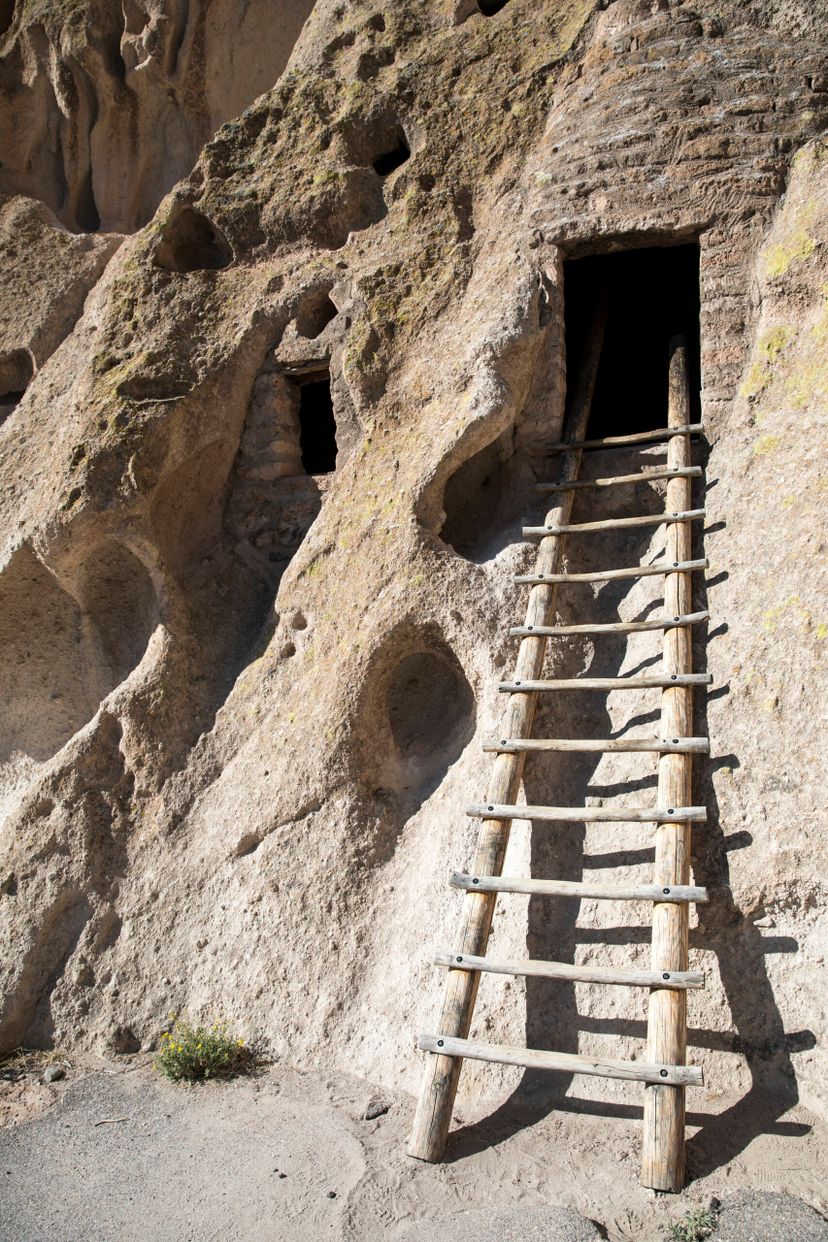
Walking underneath the towering cliffs framing Frijoles Canyon can be a spiritual experience for visitors to Bandelier National Monument. Stretching for several miles along the canyon are dozens of ancient cave dwellings that were carved into the cliffs by ancestral Puebloan people. While 70 miles of hiking trails wind through the rugged 50-square-mile national monument about 50 miles northwest of Santa Fe, Bandlier’s Main Loop Trail’s 1.2-mile, mostly level loop offers a great overview of the area where evidence of human activity dating back more than 10,000 years has been found. Short ladders provide entrance to some cave dwellings, and petroglyphs and remnants of a two-story, multi-room pueblo that housed 100 people can be seen. A half-mile trail extension leads to Alcove House, a large cave perched 140 feet above the canyon floor where approximately 25 people lived. It can be accessed via a series of stone steps and ladders.
4. Museum of Indian Arts and Culture
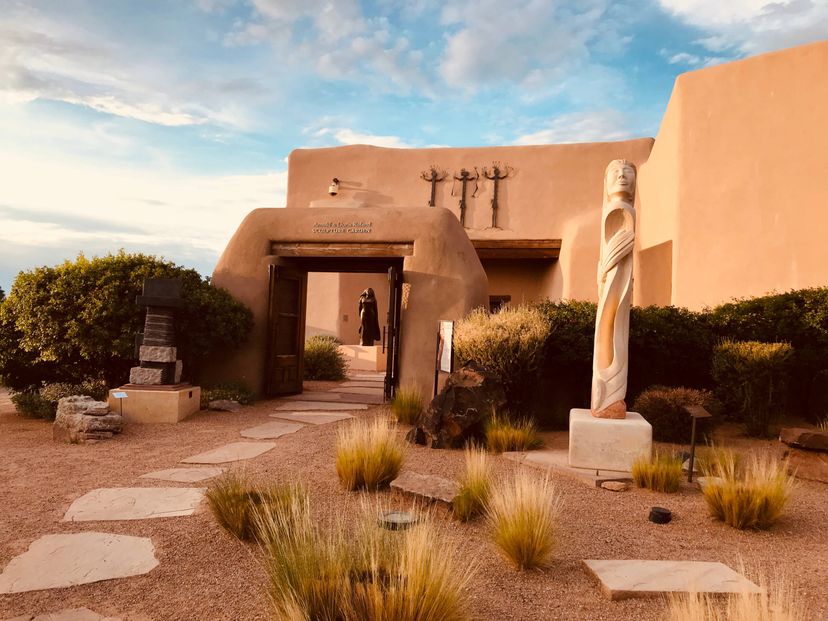
Located on picturesque Museum Hill just outside downtown Santa Fe, the Museum of Indian Arts and Culture contains an amazing 10 million artifacts from some 12,000 excavated archaeological sites across New Mexico. The Museum’s permanent “Here, Now and Always” exhibit tells the history and present life of the Pueblo, Navajo, Apache, and other indigenous cultures in the American Southwest through Native American voices, artifacts, and multimedia. The Buchsbaum Gallery showcases modern and historic pottery from the region’s pueblos, and changing galleries explore other aspects of Native American life in the Southwest such as the history and significance of turquoise in their cultures. A majestic outdoor sculpture garden features rotating exhibits of works by Native American sculptors. Also located on Museum Hill is the Museum of International Folk Art which houses the world’s largest collection of folk art with some 150,000 artifacts from more than 150 nations.
Advertisement
5. Albuquerque Museum of Art and History
Located in the heart of Old Town, the Albuquerque Museum of Art and History is a treasure trove of Southwestern art, culture, and history. Its impressive art collection includes works by renowned Taos and Santa Fe artists Ernest Blumenschein, John Sloan, and Georgia O’Keeffe. Its permanent collection exhibition, “Common Ground: Art in New Mexico,” explores similarities and innovations in the Southwest among early Native American traditions, colonial Spanish and Mexican settlers, and contemporary regional art. Pieces include Native American jewelry and ceramics as well as Hispanic religious and folk art. The museum’s equally impressive outdoor sculpture garden has over 60 pieces, many created by local sculptors. The history exhibits include a Colonial Period European armor collection that is considered one of the top collections of its kind in the U.S. Museum docents regularly conduct free walking tours of Old Town.
6. Taos Pueblo
Pueblos are scattered throughout New Mexico, but the oldest one is Taos Pueblo. Continuously inhabited for over 1,000 years, the multi-story adobe buildings from the oldest inhabited community in the U.S. Located just a few minutes from the historic Taos Plaza, the pueblo appears much as it did when Spanish explorers first arrived in Northern New Mexico in 1540. Many of the structures have walls that are several feet thick, and they were all constructed in the traditional adobe method of mixing earth with water and straw to form sun-dried bricks. Visitors get a glimpse of Native American life and culture from both today and yesterday, and authentic Pueblo pottery and jewelry are sold at shops onsite. The UNESCO-designated World Heritage Site is open daily but it’s best to call before visiting because it closes for about 10 weeks during late winter/early spring and sometimes for tribal ritual ceremonies.
7. Old Town Albuquerque
The area that’s known today as Old Town Albuquerque dates back to 1706 and while much has changed, there is still a strong sense of history there. Consisting of about 10 blocks of historic adobe buildings with a tree-lined plaza in the center, Old Town remains the cultural heart of bustling Albuquerque. Some 150 shops, restaurants, and art galleries fill the old buildings today. San Felipe de Neri Church stands on the north side of the plaza. The present-day church was built in 1793 and has walls several feet thick. Many special events take place at the plaza throughout the year, and live music typically can be heard from its covered gazebo on weekends. Several museums are located in Old Town as well, including the Turquoise Museum and Rattlesnake Museum. Fun ghost tours of Old Tour are conducted nightly, and several other types of tours are also available.
8. Georgia O’Keeffe Museum
The Georgia O’Keeffe Museum is the only museum in the U.S. dedicated to an internationally-known female artist. The downtown Santa Fe museum documents the groundbreaking life of the 20th-century modernist painter who became world-famous for her stunning interpretations of the spectacular New Mexico landscapes. The museum, the world’s largest repository of O’Keeffe’s work, showcases 1,149 O’Keeffe paintings, drawings, and sculptures from 1901 to 1984, including works from her years in New York before she came to live in New Mexico. It also has exhibited works by over 140 other artists, including Andy Warhol and Jackson Pollock. Special exhibits often include works by O’Keeffe and some of her modernist contemporaries. It also presents a “Living Artists of Distinction Exhibition Series” that honors artists who have made significant contributions to American art. Recent series have featured notable artists such as Jaune Quick-To-See Smith, Anne Truitt, Susan Rothenberg, and Sherrie Levine.
9. Rio Grande del Norte National Monument
One of the great things about New Mexico is the ability to “get out in the middle of nowhere” in short order from about any spot in the state. Nowhere is that more evident than Rio Grande del Norte National Monument (formerly called Wild Rivers). Located about an hour outside Taos just off the majestic Enchanted Circle, the remote yet easily accessible landmark is where the Rio Grande and Red Rivers converge in a spectacular, 800-foot-deep gorge. A trailhead at La Junta Overlook descends to the rivers’ confluence in only 1.2 miles. Several other trails lead into the gorge or meander along the rim of the Grand Canyon-like gorge that extends for several miles below a plateau that’s situated at an elevation of 7,000 feet. Signs of human activity since prehistoric times have been found in the national monument area including ancient dwellings and petroglyphs.
Advertisement
10. Loretto Chapel
The Loretto Chapel in downtown Santa Fe is famous for a miraculous staircase that stands 20 feet tall and has two complete 360-degree turns, yet has no visible means of support. Legend has it that shortly after the chapel was built in 1878, sisters of the chapel prayed to St. Joseph, the patron saint of carpenters, for a way to access the choir loft 22 feet above without interfering with the interior space of the tiny chapel. A mysterious and still unknown man appeared on the ninth and final day of prayer who said he could build a spiral staircase and months later, he brought the staircase to the chapel. Some say it was St. Joseph himself. Whoever it was, he produced a spectacular masterpiece of design that has been the subject of movies and TV shows like “Unsolved Mysteries.” The Gothic Revival-style chapel was patterned after Sainte-Chapelle in Paris.
Advertisement